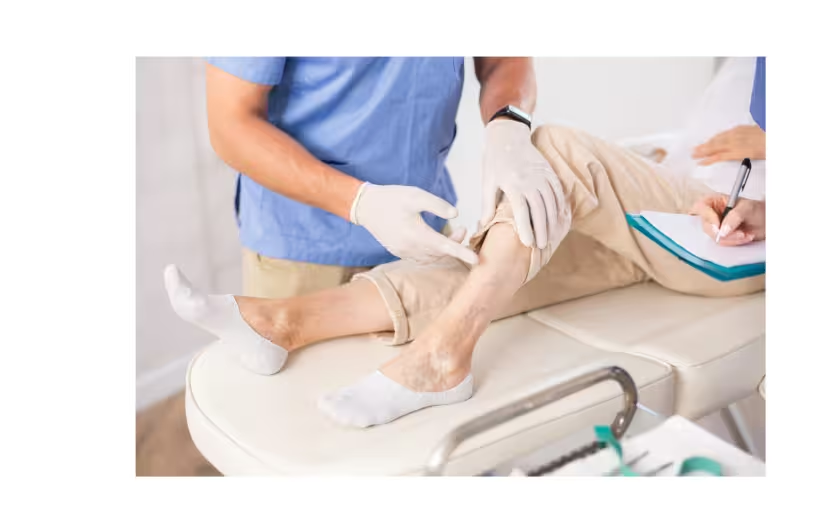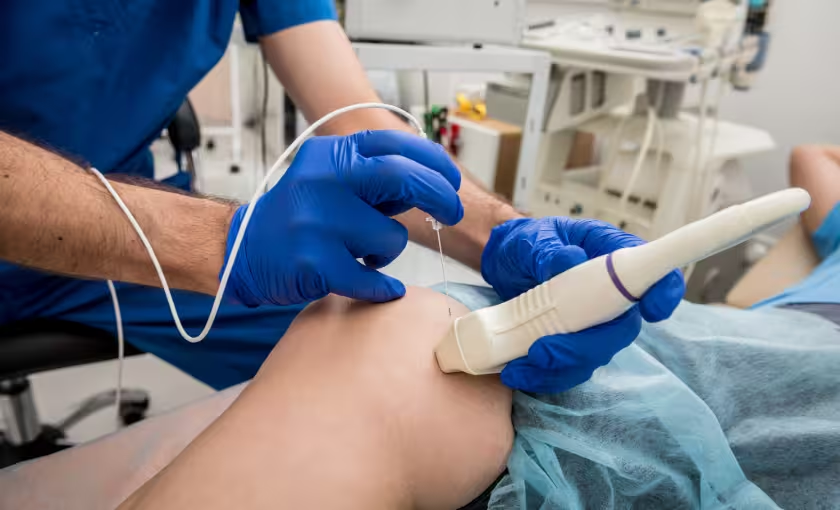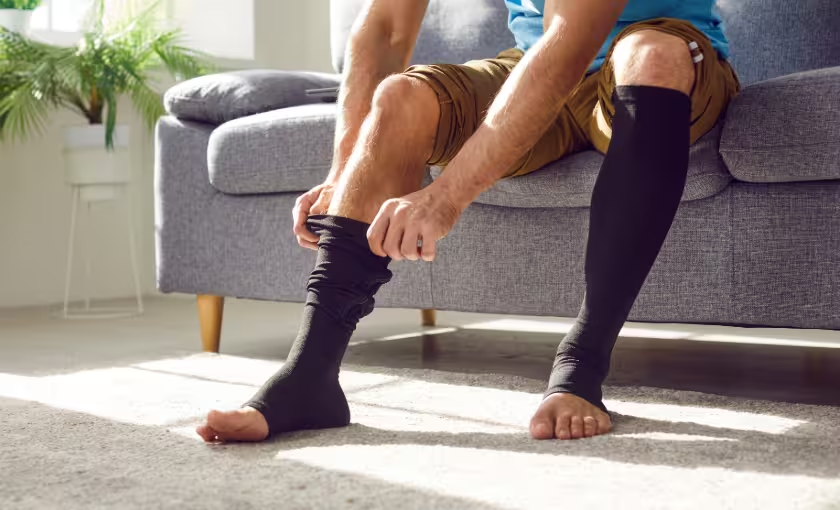Vein Surgery: The Ultimate Guide to Understanding Your Options

Vein surgery offers effective solutions for various vein conditions, from cosmetic concerns like spider veins to more serious issues such as varicose veins and chronic venous insufficiency. In this guide, we’ll explore the different types of vein surgery, when it’s necessary, and what you can expect throughout the process, helping you make informed decisions about your vein health.
Understanding the Different Vein Conditions
When it comes to vein conditions, there are a few common issues that many people encounter, including varicose veins, spider veins, and more serious conditions like deep vein thrombosis (DVT). These problems can occur when your veins have trouble circulating blood back to the heart, often because the valves in the veins are not functioning as they should.
Varicose veins are perhaps the most recognizable condition. These are large, twisted veins that can be seen bulging under the skin, usually in the legs. Varicose veins develop when the valves inside the veins weaken or fail, causing blood to pool and the veins to swell. This condition affects about 23% of adults in the U.S., with women being more likely to experience it due to factors like pregnancy and hormonal changes.
Spider veins are another common vein condition, though they are usually less severe than varicose veins. These small, thin veins appear close to the surface of the skin and often look like a web or branch pattern. Spider veins don’t generally cause physical discomfort, but they can be a source of cosmetic concern for many.
On the more serious side, deep vein thrombosis (DVT) can pose significant health risks if left untreated. DVT occurs when a blood clot forms in a deep vein, usually in the legs, and can potentially break loose and travel to the lungs, leading to a life-threatening condition known as pulmonary embolism. The Centers for Disease Control and Prevention (CDC) estimates that between 60,000 and 100,000 Americans die each year from complications related to DVT, which also highlights the importance of early detection and treatment.
When Is Vein Surgery Necessary?
Vein surgery becomes necessary when other treatments have failed to manage the symptoms or when your condition has progressed to a point where it starts affecting your daily life or poses a health risk. While many people can manage vein conditions like varicose veins or spider veins with lifestyle changes or less invasive treatments, some cases require a more direct approach.
Often, the decision to opt for surgery comes down to the severity of your symptoms. If you're experiencing persistent pain, swelling, or discomfort that doesn’t improve with compression therapy or other non-surgical treatments, it may be time to explore surgical options. Your vein doctor will also recommend it if you have developed complications like leg ulcers or blood clots. These can be dangerous if left untreated.
In some cases, people seek vein surgery for cosmetic reasons, especially with conditions like spider veins or mild varicose veins. At times, things like this can impact your self-confidence, so you might want to improve the appearance of your veins.
Another key factor in determining whether surgery is necessary is your overall vein health and the long-term risks. For example, chronic venous insufficiency (where blood pools in the legs due to faulty valves) can lead to ongoing problems like skin discoloration or ulcers. Surgery in these cases can help restore proper blood flow and prevent future complications.
Before recommending surgery, your doctor will usually run diagnostic tests, like a duplex ultrasound, to assess the condition of your veins. These tests give a clear picture of how well your veins are functioning and whether surgery is the most effective option.
Types of Vein Surgery
There are several types of vein surgery, each designed to address different vein conditions and severity levels.
One of the most common procedures for treating varicose veins is endovenous laser ablation (EVLA). This procedure uses laser energy to close off damaged veins to prevent blood from pooling in them. During the procedure, your doctor will insert a small laser fiber into the affected vein. The laser will generate heat, which will cause the vein walls to collapse and seal shut. Over time, the body naturally absorbs the closed vein, and blood flow is redirected to healthier veins.
Another effective option is radiofrequency ablation (RFA). Like EVLA, this technique uses heat to close off the problematic veins, but instead of laser energy, it relies on radiofrequency energy. RFA is particularly useful for larger veins and offers a less painful alternative to traditional surgery.
Sclerotherapy is another option, especially for treating smaller veins, such as spider veins. Instead of using heat, this procedure involves injecting a special solution directly into the affected vein. The solution irritates the lining of the vein, which makes it collapse and eventually be absorbed by the body. The procedure is minimally invasive, and most patients experience little to no discomfort. However, it may require multiple sessions for optimal results, especially for larger veins.
For larger varicose veins or veins that cannot be treated with less invasive methods, phlebectomy is often recommended. This surgical procedure involves making small incisions in the skin to physically remove the damaged veins. Phlebectomy is typically done under local anesthesia, and because the incisions are small, scarring is usually minimal.
In more severe cases, particularly when varicose veins are causing ulcers or other complications, vein stripping and ligation may be necessary. This traditional surgery involves tying off the affected vein (ligation) and removing it (stripping) through a series of small incisions.
Vein stripping was once the standard treatment for varicose veins, but with the advancement of less invasive options like EVLA and RFA, it is now used less frequently. However, it still remains an option for more severe cases where less invasive techniques are unlikely to be effective.
Preparing for Vein Surgery and the Risks
Preparing for vein surgery involves more than just scheduling the procedure.
Before your surgery, you’ll likely need to undergo some diagnostic tests which will help your surgeon map out the affected veins and assess blood flow to ensure the right areas are being treated. It's important to attend all pre-operative appointments, where your doctor will explain the details of the procedure and what to expect during recovery. You'll also discuss your medical history, including any medications you take.
In the days leading up to the surgery, you’ll need to make some small lifestyle changes as well. This could include staying hydrated, eating a balanced diet, and avoiding alcohol or smoking, as smoking can negatively impact your recovery and increase the risk of complications.
The day before surgery, your doctor might ask you to avoid eating or drinking after a certain time, especially if your procedure involves anesthesia. On the day of the procedure, wear loose, comfortable clothing, as your legs may be bandaged after surgery. If you're undergoing general anesthesia, you’ll need someone to drive you home, as you won’t be able to drive or operate heavy machinery immediately after the procedure.
As with any surgical procedure, vein surgery also comes with some risks.
Common ones include infection at the incision site, bruising, and swelling. These side effects are usually mild and resolve on their own, but if you notice signs of infection such as increased redness, warmth, or discharge, it’s important to contact your doctor.
Blood clots are a more serious but rare complication. Your doctor may recommend wearing compression stockings and staying active after surgery to reduce this risk.
Finally, there’s the possibility of vein recurrence, where treated veins reopen or new varicose veins develop in the same area. The recurrence rate varies depending on the type of surgery and individual patient factors, but modern treatments have significantly lowered this risk.
Choosing the Right Vein Surgeon
Your choice of surgeon can impact not only the results of your procedure but also your comfort and confidence throughout the process.
First, it’s important to ensure that your surgeon is board-certified and has specialized training in vascular or vein surgery. If you are considering one, don’t hesitate to ask about their experience with the specific procedure. Most surgeons have their experience listed on their websites, so be sure to take a good look online.
Additionally, patient reviews and testimonials can provide insight as well. While no doctor can guarantee a perfect experience, feedback from previous patients can give you a better idea of how they handle care, communication, and follow-up.
Another factor to consider is the facility where the surgery will be performed. Opting for a vein center with a solid reputation, like BASS Vein Center, can make a significant difference in your overall experience.
Our clinic is known for its comprehensive approach to vein care. We offer a range of state-of-the-art treatments that are customized to each patient’s unique condition. Our team of highly qualified and experienced vascular surgeons ensures that you’re receiving the highest level of care.
Beyond technical expertise, it’s essential to find a surgeon who prioritizes patient-centered care. Surgery can be a stressful experience, and having a doctor who makes you feel comfortable, respected, and supported can make all the difference.
Finally, don’t hesitate to ask questions during your consultation. Whether you’re wondering about the surgeon’s qualifications, the potential risks of the procedure, or what to expect during recovery, a good surgeon will welcome these inquiries and address them thoroughly. Transparency is key, and a surgeon who provides honest, straightforward answers is likely to be someone you can trust.
If you're looking for the best in vein treatment, trust the experts at BASS Vein Center. With advanced techniques and personalized care, our team is dedicated to helping you achieve healthier, more comfortable legs. Schedule your consultation today and take the first step toward lasting relief.
Take the First Step to Ending Annoying Varicose Vein Discomfort.






.svg)


